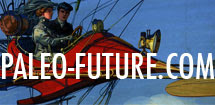In the year 2000, I think that our society will be much more enlightened than it is today with respect to the role and position of women. By the turn of the century, we will be doing much more to help our women appreciate the diversity of roles they can play and the growing values of high-level skills and education . . .
I also think that in the year 2000 we will attach more importance to education for married women - both as preparation for community service and for re-entry into the labor force when their children reach an age where mothers are more able to work outside the home . . . Housewives in general should have more time for study due to automation, more money for educational expenses due to the expected rise in family incomes, and more opportunities for continuing their education due to the increased availability of local colleges and universities. There will probably be many day care centers to enable student mothers to undertake part-time study, and local colleges may even have supervised nurseries and playgrounds to keep young children occupied while mothers attend class. For mature women wishing to enter the labor force but without marketable skills, there will probably be scholarships and educational guidance counseling of both an academic and vocational nature . . .
Glenn T. Seaborg's 1989 (1964)
Lives of Women to Improve (1923)
Hawaii As Educational Resort (1970)
Hubert H. Humphrey's Future (1967)
Longer Honeymoons, Happier Wives (1923)
Headlines of the Near Future (1972)



















